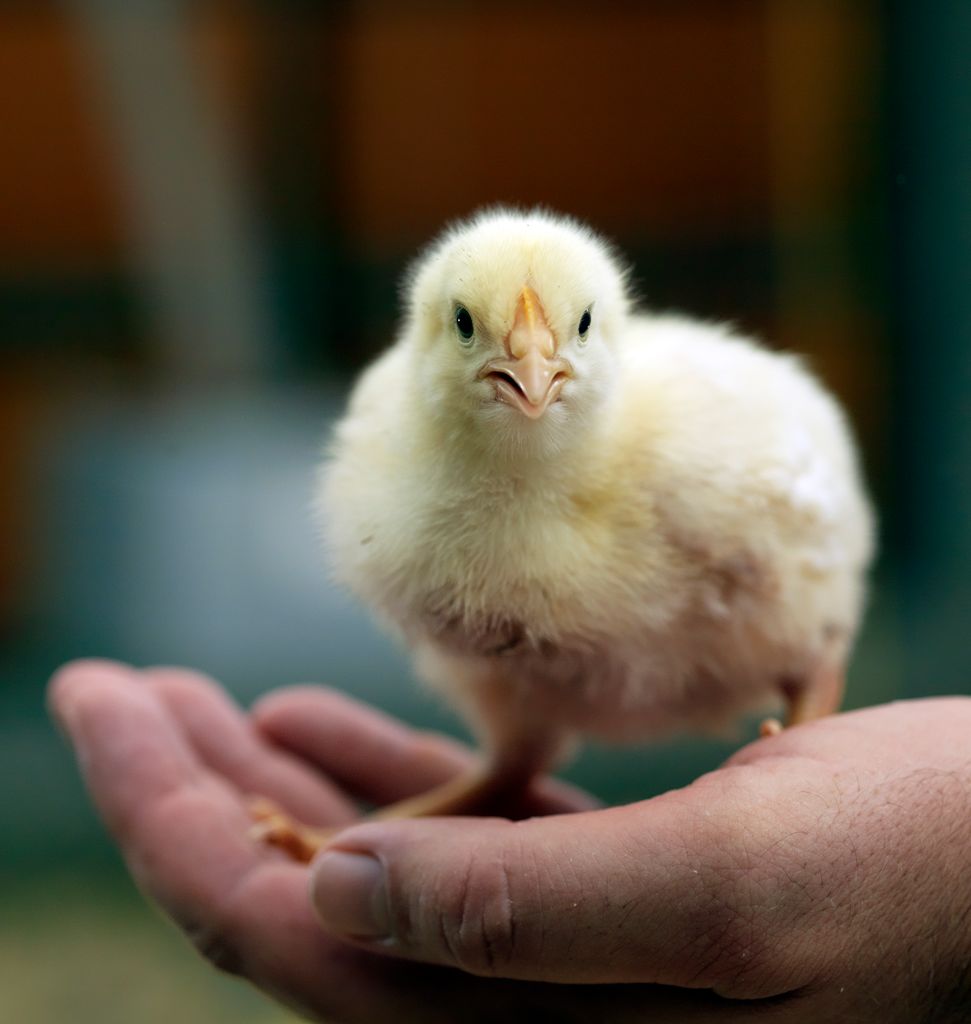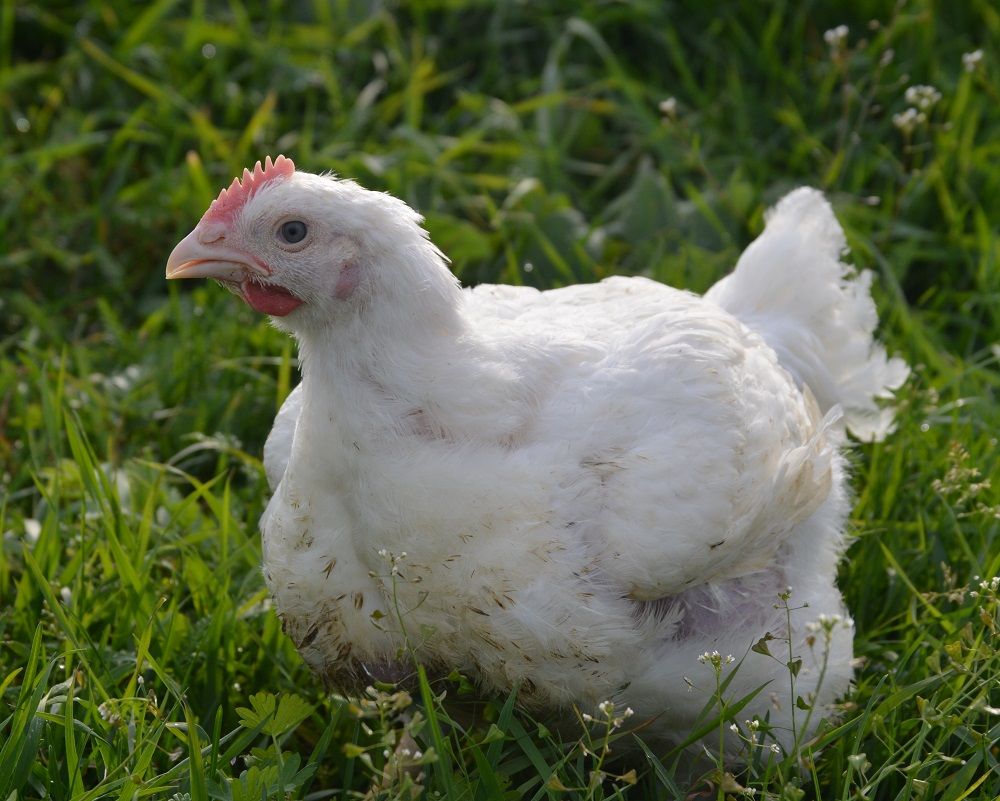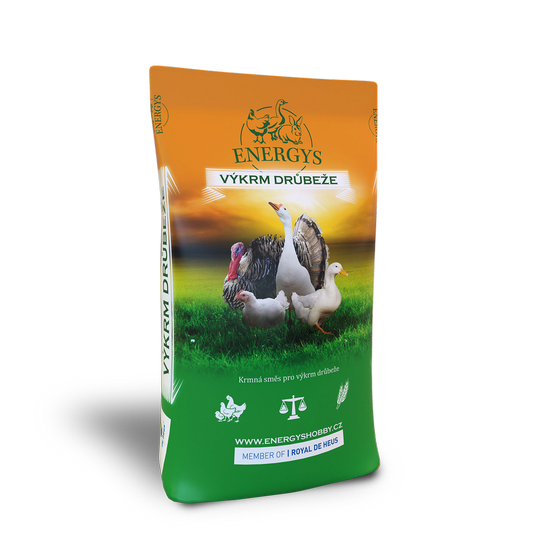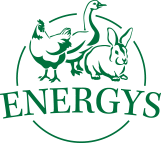Rabbits
Poultry
Laying hens
Quails
Guinea pigs
Pigs
Ostriches
Sheep and goats
Pigeons
Pheasants
Forest animals
Fattening broilers
Spring is the period when chickens start to be fattened in domestic conditions. For the purposes of meat production, it is best to use specially-bred hybrid meat breeds that have the genetic properties of fast growth and high muscle mass. These breeds are called broiler chickens or broilers.
Breeding broilers, or when I bring small chickens home
For chickens at an early stage it is ideal if you, increase the heat and light in the breeding facility, obviously depending on the season. On the first day of life, it is ideal for chickens to have light 24 hours a day, on the second day of life 23 hours a day and from the 7th day it is ideal for broilers to have 18 hours of light a day.
During the first week of life chickens are exposed to lots of stress factors, such as transport or getting used to solid feed. This causes a change to the stomach pH, which could lead to health problems due to the influence of an increased amount of E. coli bacteria. It is therefore a good idea to ensure that chickens in the first week of life have water with a pH of 4. This is possible to arrange using commercially-produced acidification agents or using 8% vinegar, which is diluted in a ratio of 0.1%. Always ensure there is plenty of water.
Fattening broilers
Starting of fattening chickens
As far as concerns nutrition, it is also decisive in the first week of broilers’ life. In a manner similar to other animals, it is hard to make up later for a mistake with feeding at the start. This means that it takes the chickens longer to grow to the required weight and they are more expensive. This is because in the first days of life the metabolism is faster and the relative speed is greater, so the demands on nutrition are high.
For feeding broilers in the first two weeks of life most people use a starter for broilers in the form of crushed complete compound feed. With the exception of water, the animals do not need anything else. The protein content in feed is important for the growth of muscle mass. No less important, however, are amino acids, in particular methionine and lysine, which are added to compound feeds and are a building block for proteins.
Starters are usually enriched with an anti-coccidial to suppress coccidia and therefore prevent increased dying off. Salinomycin is often used as feed for broilers, but it is poisonous for turkeys, so never feed turkeys with broiler feed with an anti-coccidial!
Middle stage of fattening
From the start of the third week of the life of chickens for fattening a grower is administered; the ideal form is granulate. This limits unnecessary feed losses. The relative intensity of broilers’ growth is a little lower in this period, so the feed does not have to be that concentrated and the protein content is lower by approx. 1% than in starter. The amino acid content, as well as anti-coccidials to reduce die off, are again important.
Grower is fed to chickens until five days before slaughtering. If you are fattening chickens at home up to higher weights, however, it is enough if you administer grower up to the 40th – 45th day of age.

End of fattening
You then move to a finisher, which is granulated feed for the last stage of fattening. This means that it is administered until slaughtering, but for at least the last five days. In this period relative growth is slower and the protein content in feed is therefore again approx. 1% lower. Finisher does not contain an anti-coccidial. In this period you can save on feed a little, so finisher can be mixed, for example, with corn middlings.
Using cereals for fattening broilers
The aforementioned procedures concern the use of complete compound feeds, i.e. feeds that contain all the necessary substances and where the animals then just need pure water.
There are, however, breeders who have access to their own cheap cereals, mostly wheat or corn. In this case, for the purposes of fattening cereal is mixed with protein concentrate in loose form, which is based on soya, the most-used source of protein. In accordance with the concentrate producer’s instructions, mix cereals, best of all in middling form, with concentrate, in various ratios in accordance with the fattening stage.
Due to the influence of the loose structure, however, assume losses of feed due to the influence of scratching, etc. There may also be higher losses of livestock because of the absence of anti-coccidials and a higher content of mould and mycotoxins in the cereals. The mould content in complete feed is minimal, due to the heat treatment.
Taste of chicken meat
From the 40th day, broilers start to store fat, known as the “bearer of taste”, in their meat and the meat also becomes more mature. This means that the longer you fatten chickens, the more fat they will contain and the better they will taste. Due to the fat content the skin colour changes to yellow.
Conclusion
In conclusion, bear in mind that the first stage of fattening is the most important for the whole result. The concentration or strength of the feed is not shown only by the protein content, but also by the amino acid content (e.g. methionine and lysine). At least five days before slaughtering, stop using a feed with an anti-coccidial content. Never give turkeys broiler feed. Always ensure there is plenty of fresh drinking water.
Related posts
16. March 2022
When selecting feed (not only) for poultry, it is essential to base it on the purpose of the breeding or fattening phase. Energys hobby feeds accentuate these needs, so you are sure to choose whatever stage of development your poultry is in. But how do you choose the right feed and which is the most…
16. March 2022
When selecting feed (not only) for poultry, it is essential to base it on the purpose of the breeding or fattening phase. Energys hobby feeds accentuate these needs, so you are sure to choose whatever stage of development your poultry is in. But how do you choose the right feed and which is the most…
9. December 2021
While there are technological procedures for the rearing and fattening of common species and utility types of poultry, there are only few instructions for the so-called non-traditional poultry species, but also for runners with potential for commercial use. In this article you will find basic information on the breeding of Barbary and Mallard ducks.
22. February 2021
Spring is the period when chickens start to be fattened in domestic conditions. For the purposes of meat production, it is best to use specially-bred hybrid meat breeds that have the genetic properties of fast growth and high muscle mass. These breeds are called broiler chickens or broilers.
20. November 2020
When feeding and fattening ducks and geese, it is important to be aware of the differences between the main nutritional requirements. Experienced breeders are familiar at least with the basic differences between geese, ducks and Muscovy ducks.
Related products

POULTRY UNI 30
A mashed concentrate for fattening of all categories of poultry, which includes the highest quality soja. It is mixed with cereals in a ratio of 20-40% (by type or phase of fattening). It contributes to fast growth and a high meat content. It does not contain coccidiostats.

BROILER MAXI
Feed for the final phase of fattening broilers. Supports a high meat content and a delicate meat taste. Start using it 5 or more days before slaughter. Does not contain coccidiostatics.

BROILER MIDI FORTE
A granulated feed mix for the intensive fattening of broilers from 15 days of age to a minimum of 5 days before ending feeding up. The Coccidiostat included lowers mortality during fattening. For the next phase of fattening Broiler MAXI is a suitable mix.

BROILER MINI FORTE
A ground feed mix with Coccidosistats, for the intensive feeding of broiler chickens up to 14 days of age and a support to fast growth a an excellent state of health in your broliers-

DUCK MINI
A high quality ground mix for fattening ducks and geese up to their 2nd week. It is suitable for fast growth and high meat content.

TURKEY MAXI
Feed for the final stage of turkey fattening. Use from the 13th week of age. It does not contain a coccidiostat.

TURKEY MIDI FORTE
A high quality granulated feed with coccidiostats for feeding turkeys from 5 to 12 weeks of age. It is the basis for fast growth, high meat content and an excellent state of health of your turkeys. The coccidiostat content lowers mortality during feeding. It continues on from feeding with Turkey Mini Forte. The live weight for turkeys at the end of this period should be around 5.9 kg for hen turkeys and 8.9 kg for cocks.

TURKEY MINI FORTE
A ground mix with Coccidiostats for fattening turkeys up to an age of 4 weeks. It is the basis for high meat content. Afterwards use the Turkey Midi Forte mix.

DUCK MAXI
A granulated mix for feeding ducks and geese from 3 weeks of age up to slaughter. The nutrients it contains support fast growth , a high meat content and a delicate meat taste.
